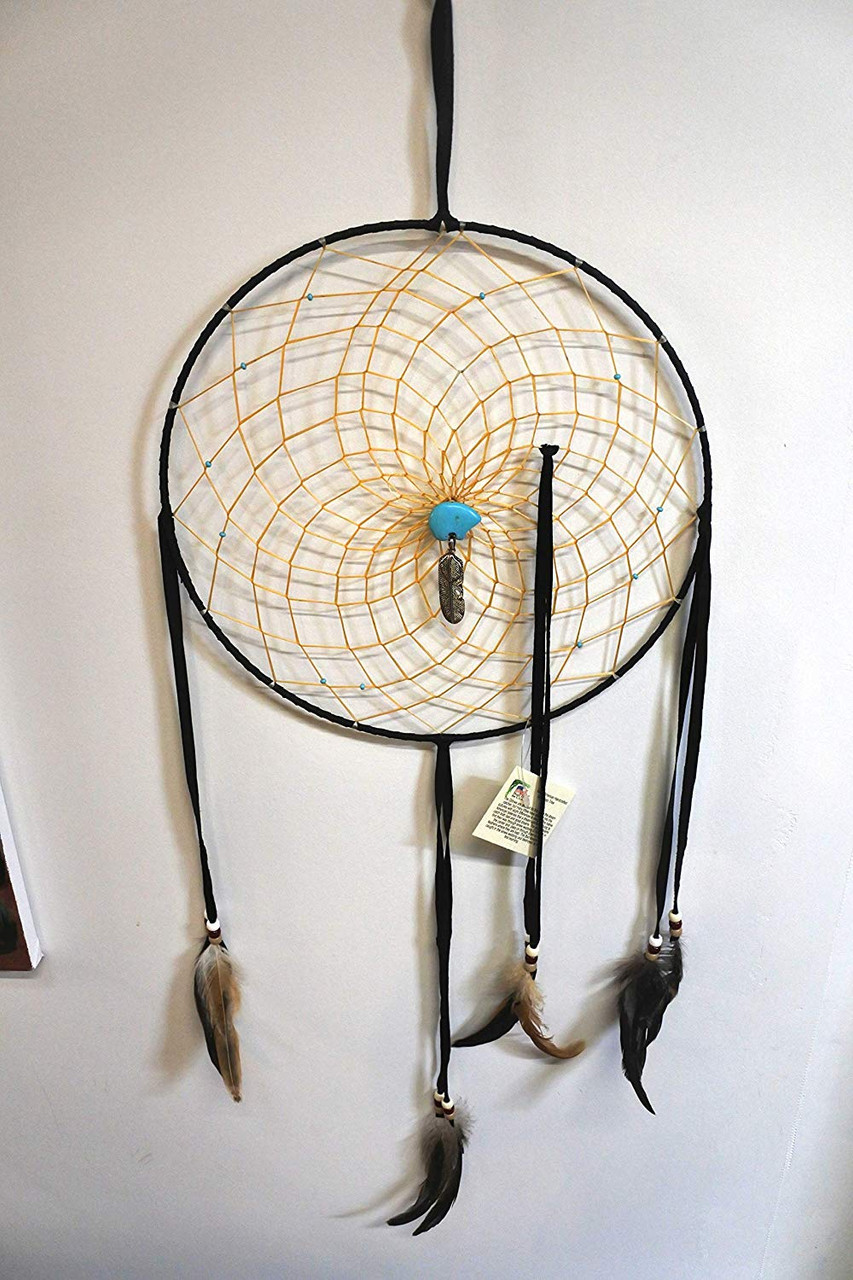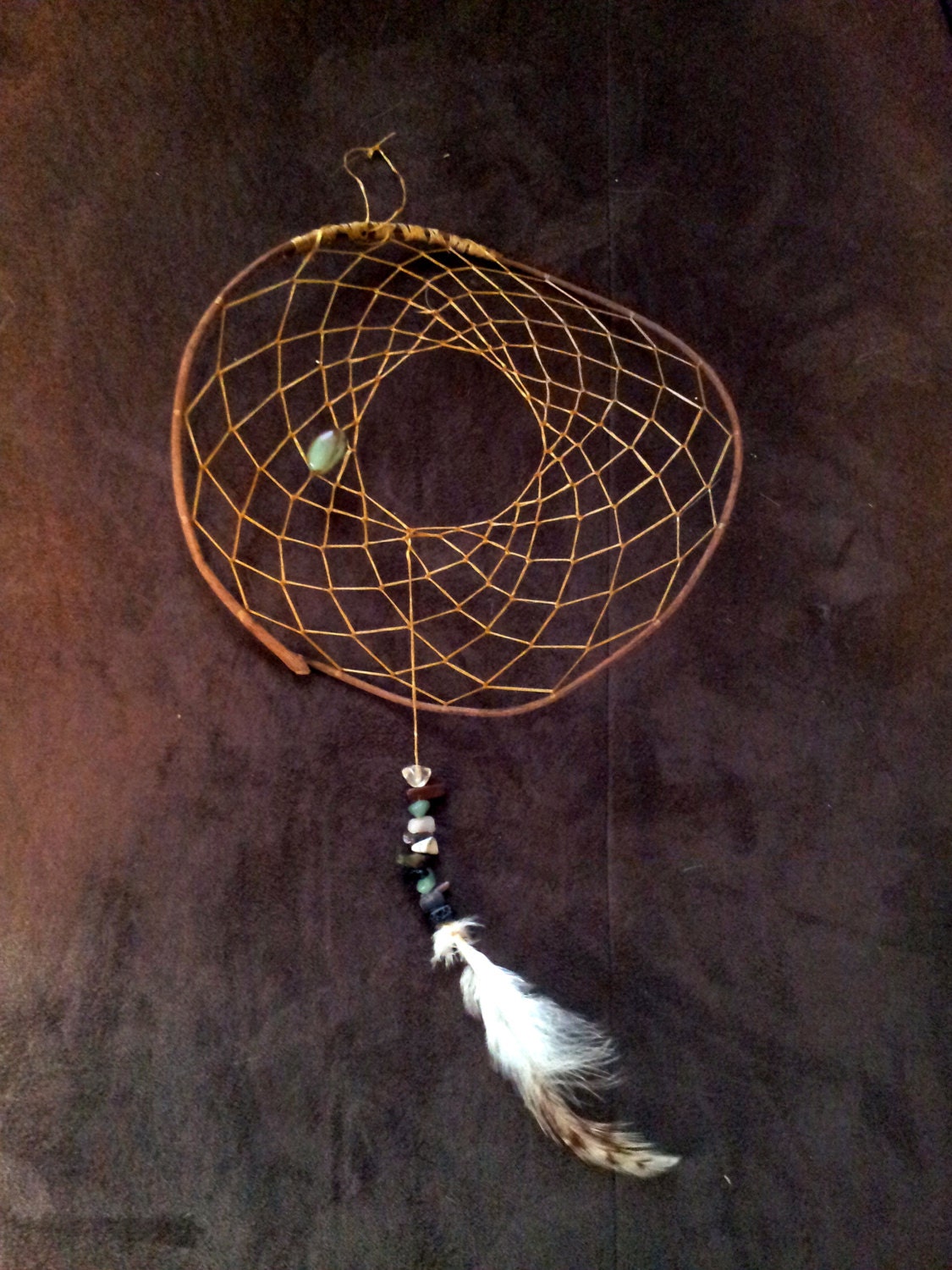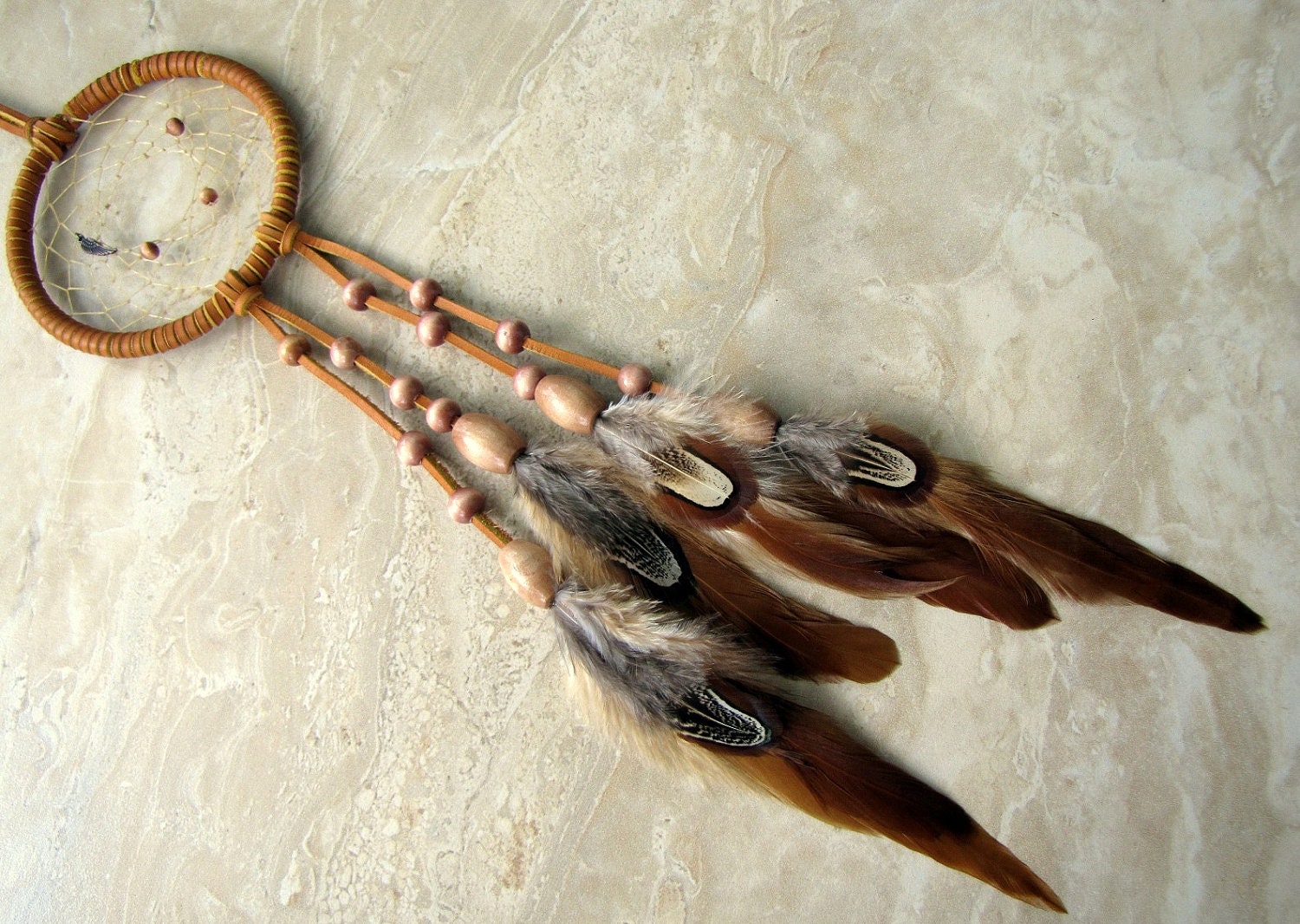Dream Catcher Made By Native American
Today dream catchers are made by Native American artists from many Nations; a great deal of people are under the impression that the Lakota/Dakota/Nakota (called Sioux by others) originated the dreamcatcher... There are many Native American stories and legends about spiders and webs, but the Ojibwe (called Chippewa by others) originated the dream catcher. A look at the long tradition of storytelling, oral histories, passed down parent to child, generation after generation, clears up any confusion about the origin of dream catchers.
- Dream Catcher Native American Meaning
- American Indian Dream Catchers
- Dream Catcher Authentic Indian Made
Frances Densmore conducted an extensive study of material culture of the Ojibwe/Chippewa living in Minnesota, Wisconsin and Ontario, Canada in the early 1900's and the information is presented in the book, Chippewa Customs, published by Minnesota Historical Society Press (St. Paul) in 1979. Densmore describes that articles representing spider webs were usually hung from the hoop of a child's cradle board, and it was said that 'they catch and hold everything evil as a spider's web catches and holds everything that comes into contact with it'. These 'dream catchers' were wooden hoops with a 3 1/2 in. diameter, filled with a web made of nettle-stalk cord that was dyed red with bloodroot and wild plum inner bark. It is interesting to note that the 'weave' of the dream catcher photographed in Densmore's work is different from that usually done today. By the early 1900's, dark red yarn had been substituted for plant fiber in constructing the web by the Ojibwe. Densmore also mentions a similar netted-hoop made by the Pawnee to represent the Spider-Woman, a spirit who controlled the buffalo.
Native american dreamcatchers. Condition is 'New'. Shipped with USPS Priority Mail. 10 inch Dream catcher Made with leather and deer antler, bronze plated tubing With blue glass beads and bronze beads. Pouch hand made and hand painted wolf paw. Very beautiful, unique. Will make a great home decoration. 7 turkey feathers.Artist Mikaylonewolf. Native American made 2'-3' or 6' Dream Catcher Genuine Historically made with materials used close as to original Akitradingpost. 5 out of 5 stars (389). Because here they come. There are 8309 native american dream catcher for sale on Etsy, and they cost $24.38 on average. The most common native american dream catcher material is metal. Dream Catchers can be made of other materials such as our Rattan hoop in Photo B. Our experience is that the beauty of the Dream Catcher comes from its original uncluttered form and notion that we exist in the presence of two worlds, a physical one and a spiritual one. Learn to make more Native American Crafts in our Craft Tutorials.
The Ojibwe, whose traditional homeland is around the Great Lakes region, have ancient stories about the dreamcatcher, how it 'came to be', why it is used, and how it should be made. A while back there was quite a discussion about the origin of the dream catcher on the soc.culture.native Newsgroups and on the Native-L Listserver.
| Contemporary dreamcatcher with traditional Chippewa weave, made by my friend Michael O'Neill (Red Lake Band of Chippewa) and his wife (Fond-du-lac band of Chippewa). 'My wife and I had went out one evening and gathered up some red willow... the willow is wrapped with one continuous piece of yarn including the web... it takes about an hour to make....I use a deep red yarn... like bloodroot'. |
from Lyn Dearborn
In response to a question about the FIRST origin of Dream Catchers,
Nov. 1, 1995 to the Native-l Listserver.
Long ago in the ancient world of the Ojibwe Nation, the Clans were all located in one general area of that place known as Turtle Island. This is the way that the old Ojibwe storytellers say how Asibikaashi (Spider Woman) helped Wanabozhoo bring giizis (sun) back to the people. To this day, Asibikaashi will build her special lodge before dawn. If you are awake at dawn, as you should be, look for her lodge and you will see this miracle of how she captured the sunrise as the light sparkles on the dew which is gathered there.
Asibikaasi took care of her children, the people of the land, and she continues to do so to this day. When the Ojibwe Nation dispersed to the four corners of North America, to fill a prophecy, Asibikaashi had a difficult time making her journey to all those cradle boards, so the mothers, sisters, & Nokomis (grandmothers) took up the practice of weaving the magical webs for the new babies using willow hoops and sinew or cordage made from plants. It is in the shape of a circle to represent how giizis travels each day across the sky. The dream catcher will filter out all the bad bawedjigewin (dreams) & allow only good thoughts to enter into our minds when we are just abinooji. You will see a small hole in the center of each dream catcher where those good bawadjige may come through. With the first rays of sunlight, the bad dreams would perish.
When we see little asibikaashi, we should not fear her, but instead respect and protect her. In honor of their origin, the number of points where the web connected to the hoop numbered 8 for Spider Woman's eight legs or 7 for the Seven Prophecies.

in a cradle board [Densmore 1979]. |
It was traditional to put a feather in the center of the dream catcher; it means breath, or air. It is essential for life. A baby watching the air playing with the feather on her cradleboard was entertained while also being given a lesson on the importance of good air. This lesson comes forward in the way that the feather of the owl is kept for wisdom (a woman's feather) & the eagle feather is kept for courage (a man's feather). This is not to say that the use of each is restricted by gender, but that to use the feather each is aware of the gender properties she/he is invoking. (Indian people, in general, are very specific about gender roles and identity.) The use of gem stones, as we do in the ones we make for sale, is not something that was done by the old ones. Government laws have forbidden the sale of feathers from our sacred birds, so using four gem stones, to represent the four directions, and the stones used by western nations were substituted by us. The woven dream catchers of adults do not use feathers.
Dream catchers made of willow and sinew are for children, and they are not meant to last. Eventually the willow dries out and the tension of the sinew collapses the dream catcher. That's supposed to happen. It belies the temporary-ness of youth. Adults should use dream catchers of woven fiber which is made up to reflect their adult 'dreams.' It is also customary in many parts of Canada and the Northeastern U.S. to have the dream catchers be a tear-drop/snow shoe shape.
The above story is a combination of information gathered by Lyn Dearborn, from California, and Mary Ritchie, of the Northern Woodlands, with assistance from Canadian elders. Miigwetch!
Thanks also to Theresa and Aandek for the Ojibwe terms & translations for dream catchers on Rob's Ojibwe Bulletin Board!
from a July 26, 1995 submission to the soc.culture.native Newsgroup
Branches, Twigs & Roots Bibliography and Books to Buy On-Line

| Text and Graphics © 1994 - Tara Prindle unless otherwise cited. |
A dream catcher is pretty self-explanatory, right? Yep, you’d be correct in thinking that dream catchers are made to snatch away bad dreams… but there’s so much more to them than that.
These beautiful Native American talismans have a rich history, steeped in tradition. They’re not just eye-catching displays in cheap gift stores!
Anyone who has a dream catcher or wants to buy one should read this article first. You need to know the true meaning of dream catchers to respect and admire the culture behind them.
What is a Dream Catcher?
Just in case you’re really clueless, a dream catcher is a small round talisman that’s hung by your bed to capture bad dreams and/or deliver good dreams and thoughts while you sleep.
Traditional, authentic dream catchers were made from wooden hoops, with thread webbing, handmade beads, leather, and feathers. Organic, natural materials are essential. They would be a few inches wide at most, and certainly wouldn’t be the bright, colorful and over-the-top dream catchers you find in cheap holiday gift shops.
The huge, plastic dream catchers with vividly bright faux feathers are a commercialized version of the original Native American dream catcher – more on why you shouldn’t buy these below.
How the traditional dreamcatcher works varies slightly from one legend to another, but the meaning is always similar: to catch harmful thoughts or bad dreams and keep you safe with good dreams and positive thoughts while you sleep. Dream catchers were originally made for very small children and babies, so they could be hung just above their cribs.

Over the decades, dream catchers have taken on new meanings – some with respect for the traditions, others without – and become symbols for various movements, such as the non-violent Pan-Indianism Movement.
The Beautiful Legends Behind Dream Catchers
Various Native American cultures have dream catchers, or a version of them, woven into their traditions. But it is the Ojibwe culture (indigenous people originally from northern midwestern USA and Canada) that the majority of historians agree the dream catcher originated from.
The legend focuses on Asibikaashi, the spider woman. She was the spiritual protector of the Ojibwe people, protecting the children from harm.

As their people spread further across the land, Asibikaashi found it harder to protect everyone from far away. So, the dream catcher was created.
The web within the willow hoop, like a spider’s web, would catch any bad thoughts or spirits lingering around – not specifically for bad dreams.
From here, the legend branches out with different meanings and stories depending on who’s telling the history of dream catchers.
Many believe that the dreamcatcher will catch bad dreams in the web, while good dreams filter through the hole, gem or bead in the center. When the first rays of the sun touch the dreamcatcher in the morning, those trapped bad dreams are destroyed.
Lakota Legends

Similarly to Ojibwe, the Lakota legends about dreamcatchers begin with a spiritual being associated with spiders. Iktomi created the dreamcatcher to catch good ideas on the web so they won’t be lost, but let bad ideas filter through the central hole and simply pass by their people unharmed.
The dreamcatcher itself is also a symbol – the perfectly round hoop is a symbol of the circle of life, the sun, and the moon. The soft, downy feathers (often owl feathers) are the ladders that good dreams float down into your mind.
Furthermore, the number of points where the webbed thread touches the inside of the hoop is symbolic. 13 points represent the phases of the moon, 8 for the spider woman’s legs, 7 for the prophesies, 6 for the eagle, and 5 for a star.
Sacred beads and tokens can also be added amongst the feathers.
Finally, the gems or stones in the dreamcatcher can represent good dreams or, if there’s a single stone, represent the creator of the world.
Why Understanding the Symbolism and History of Dream Catchers is Important
Dream Catcher Native American Meaning
Dreamcatchers are closely tied to heart-warming and noble legends of Native Americans – so is it right for people around the world to buy dreamcatchers on a whim or simply because they’re “pretty”?
American Indian Dream Catchers
The dreamcatcher should be a symbol of unity among Native American communities, not an over-commercialized and misused plastic decoration, made in China, and eventually forgotten in a landfill site.
This is where cultural appropriation comes in. It is controversial, and frankly offensive in our opinion, to adopt a piece of tradition from one culture without even trying to understand and respect the origins and meaning behind it.
Cultural appreciation, on the other hand, should be commended. Owning a dreamcatcher, understanding and respecting the meaning behind it, and supporting the Native American people is to be commended.
That’s why we recommend you buy dreamcatchers from traditional Native American craftspeople – you’ll find them for sale in Indian territory across the US and Canada, just look for tribal giftshops or attend Native Indian events to learn more about the culture as well.
For online resources to buy authentic dreamcatchers from, check out this list from Native Languages.
Gifting dreamcatchers to newly born babies and young children is a beautiful way to honor the original dream catcher meaning and respect the legends behind them by passing down the story from one generation to the next.
Summary – Dream Catcher Meaning
If you’ve been looking for a scientific explanation of how dreamcatchers work, you’re going to be disappointed. Dream catchers are stunning talismans with a beautiful history and meaning behind them.
The simple act of respecting and honoring the tradition of your dreamcatcher as you hang it above your bed is sure to leave you with a smile on your face and good dreams in your mind!
If you want to buy a dream catcher, you can check the best seller from Amazon, Walmart and even Aliexpress (very cheap)
Just remember to:
Dream Catcher Authentic Indian Made
- Learn about the dreamcatcher you’re buying, and the symbolism behind it.
- Respect and appreciate the culture that brought you the dream catcher.
- Buy traditional, hand-crafted dreamcatchers from Native American craftspeople.